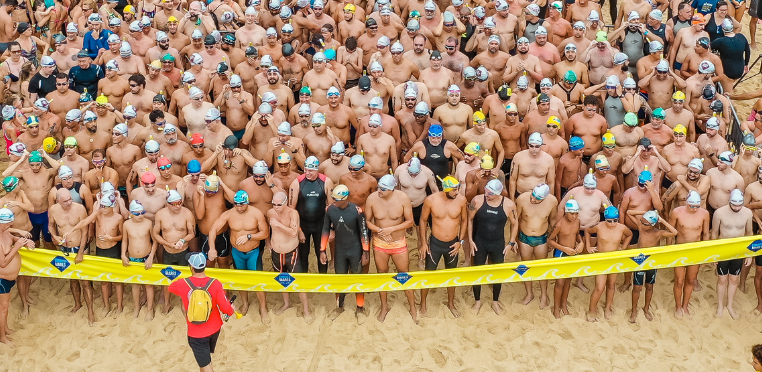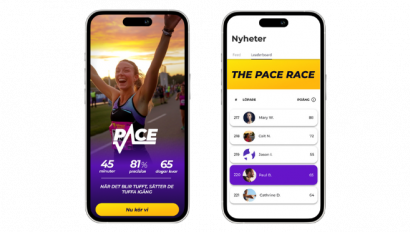How Much Does RFID Chip Timing Cost?

Understanding RFID Chip Timing Costs for Races
Timing is a crucial element in any race event, whether it’s a marathon, triathlon, or a local community race. Accurate and efficient timing ensures fair competition and provides participants with their official race times. One popular method for achieving precise timing is RFID chip timing.
In this blog post, we will explore the factors that influence the costs of RFID chip timing for races and provide insights into budgeting and cost optimization, and you will get an answer to the question “how much does chip timing cost?”.
Factors Affecting RFID Chip Timing Costs
It isn’t as simple as giving you a straight-up price tag on chip timing service. Every race is unique and requires different equipment depending on size, nature and sport. Below we discuss the main contributing factors that will affect your pricing.
Size of the Race
The number of participants is a significant factor that affects RFID chip timing costs. Larger races with a high volume of participants require a more extensive infrastructure to handle the timing process. This includes a larger quantity of RFID chips, additional timing equipment, and personnel to manage the timing system. Each chip has a cost, but chip timing also involves a flat fee for the service and equipment – so in one way you can say that it is favorable for large races to use chip timing as you usually get a lower cost per racer in the end. That is, if you distribute the flat fee cost over the amount per racer.
Type of RFID Chips
RFID chips come in two main types: disposable and reusable. Disposable chips are typically less expensive as they are designed for single-use and sometimes made of paper or put on as a sticker – this is why you usually see this type of chip in “dry” races such as cycling and running. Disposable chips can also be automatically integrated in the paper number bib. On the other hand, reusable chips are more durable and can be utilized for multiple races – swimrun and open water swimming are examples of races that usually require reusable chips. However, reusable chips come at a higher cost due to their longevity and reusability. Some organizations buy their own reusable chips in order to save costs in the long run.
Disposable RFID chips typically range from a few cents to around €1 per chip. Depending on the number of participants, the cost can add up quickly. For example, if you have 1,000 participants and the cost per chip is €0.50, the cost for chips alone would be €500. Reusable RFID chips are generally more expensive compared to disposable ones due to their durability and reusability. Prices can range from a few euros to around €10 per chip.
Complexity of Timing System
The complexity of the timing system also impacts the overall costs. This includes the amount and type of RFID readers, antennas, and timing software. Basic entry-level systems are more affordable, while advanced systems with additional features such as multiple timing points, live tracking, or integration with race management software can be more expensive.
Basic timing systems, including RFID readers, antennas, and simple timing software, can start around a few hundred euros. More advanced timing systems with additional features such as live tracking, multiple timing points, or integration with race management software can cost several thousand euros.
Additional Equipment
In addition to RFID chips and timing systems, other equipment such as timing mats, start/finish line structures, backup systems, and display boards may be required. These additional components add to the overall cost of the timing infrastructure. Here are a few examples:
- Timing Mats: Depending on the size and quality, timing mats can range from a few euros dollars to over a thousand euros.
- Start/Finish Line Structures: Costs for start/finish line structures can vary widely based on factors such as materials, size, and branding requirements. Prices can range from a few hundred to several thousand euros.
- Backup Systems and Displays: The cost of backup timing systems and displays can vary depending on the specific equipment and functionality needed. Prices can range from a few hundred to several thousand euros.
Services and Support
Some race organizers may opt for professional services and support, including technical assistance, setup, and race management. These services come at an additional cost, but they provide expertise and ensure a smooth timing process.
Cost Range And Variability: How Much Will Chip Timing Cost For My Race?
The cost of RFID chip timing for a race can vary significantly based on the factors mentioned above. It is difficult to provide an exact cost without specific details about the race. Generally, the costs can range from a few hundred euros for small local races to several thousand euros for larger events with advanced timing systems and additional services.
To help you get a sense of the cost, you can see general price ranges below:
- Set-up cost: 0 to €500
- Cost of timing staff (on-site or remote) per day: €100-€650
- Finish line timing portal: €300-€500
- Starting line timing portal: €200-€400
- Split time timing portal: €200-€400 per split time
- Chips and/or number bibs: €2-€3 per participant
- GPS Trackers: €15-18 per tracker/participant
Want an exact quote for your race? We are happy to help you. Find more information, fill out the form on this page to get a personalized quote for RaceID Chip Timing.
Tips for Budgeting and Cost Optimization:
To effectively budget for RFID chip timing costs and optimize expenses, consider the following tips:
- Research and compare different RFID chip providers to find the most suitable option for your race – check out this comparison chart.
- Evaluate the specific needs of your event and participants to avoid unnecessary expenses.
- Strike a balance between cost and desired features by assessing the trade-offs between different timing system options.
Accurate timing is essential for any race, and RFID chip timing is currently the most common method – especially for large races. Understanding the factors that influence the costs of RFID chip timing, such as the size of the race, type of RFID chips, complexity of the timing system, additional equipment, and services, is crucial. By considering these factors and following the tips for budgeting and cost optimization, you can ensure efficient timing while managing your expenses effectively.
Did you know that chip timing is not your only option? App timing can be a great and cost-efficient alternative depending on the nature of your race. To learn more about your timing options, check out this article that compares chip & app timing (or watch the video below).
Best of luck with your search for your optimal timing solution! You will find plenty of other resources under the “timing” section of the organizer learning center. For a precise chip timing cost quote, let us know the details of your race and we will get back to you in no time.
Did you find this article helpful? For more tips subscribe to our newsletter!


